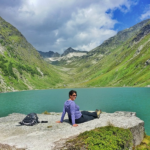Since ancient times, explorers and travelers have dreamed about the Silk Road, which connected Eastern and Western civilizations. Across the desert, across the mountains, and along this old trade route, we can discover thousands of years of cultural sties as well as natural wonders. The top 6 destinations are must-visit places on your Silk Road tour.
Xian
This 3000-year-old ancient capital of China is the starting point of the Silk Road and one of the birthplaces of Chinese civilization. Here, you can visit the Terra-cotta Warriors, the Big Wild Goose Pagoda, Xian Old City Wall, and other notable historical sites to experience the magnificence and splendor of old civilization.
Lanzhou
With its unique geographical location and rich cultural heritage, Lanzhou, which runs through the Yellow River, was an important stop on the Silk Road. You may sample the real Lanzhou noodles and enjoy the distinct flavor of the northwest region. At the same time, picturesque attractions like the Yellow River Iron Bridge and Baita Mountain should not be overlooked.
Wuwei
Discover the Leitai Han Tomb and learn about Han Dynasty culture. moreover, Wuwei grassland beauty is a major attraction with the broad grassland, clean lakes, and herds of cattle and sheep, creating a stunning image.
Zhangye
The Zhangye Danxia landform is known as “rainbow mountain” due to its vibrant colors and unusual shapes. Under the sun, these crimson mountains appear to be lit, shining a bright light. In this magnificent place, we appear to be in a dream world, immersed in nature’s unique enchantment.
Jiayuguan
This magnificent pass of Jiayuguan was a key landmark on the Silk Road. There’s also the famed Great Wall of China. Standing on Jiayuguan’s tower, seeing the Qilian Snow Mountain from afar and the Gobi beach from close, the vicissitudes of history and the great beauty of nature are intermingled, giving visitors a rushing feeling.
Dunhuang
Dunhuang, a famous cultural city in western Gansu province, attracts countless tourists with its rich historical sites and unique natural scenery. Mogao Grottoes, a thousand-year-old grotto where murals and statues compliment each other to convey ancient legends. Walking between the ringing sand mountains, listening to the sand rustle beneath your feet, as if you could hear the echo of history. Crescent Spring is like a pearl in the desert, clear to the bottom, and stands out against the surrounding sand dunes.
Xinjiang
Xinjiang is located in Eurasia’s interior, bordering eight countries: Russia, Kazakhstan, Kyrgyzstan, Tajikistan, Pakistan, Mongolia, India, and Afghanistan. Because of its unique geographical location, Xinjiang has become a vital link between the East and West, as well as the heart of the Silk Road.
Xinjiang is home to 55 different ethnic groups, including Han, Uyghur, Kazak, Hui, Mongolian, Kirgiz, and Xibe, among others.










How to Plan a Trip to Vietnam and Cambodia
Vietnam and Cambodia are two attractive destinations in Southeast Asia, with rich natural landscapes and cultural heritages. There are 5 tips for you to plan your Cambodia Tours and Vietnam Tours. Visa and Currency Don’t forget to confirm your visa before traveling. Vietnam visa is categorized into e-visa and visa-on-arrival. The e-visa is valid for […]